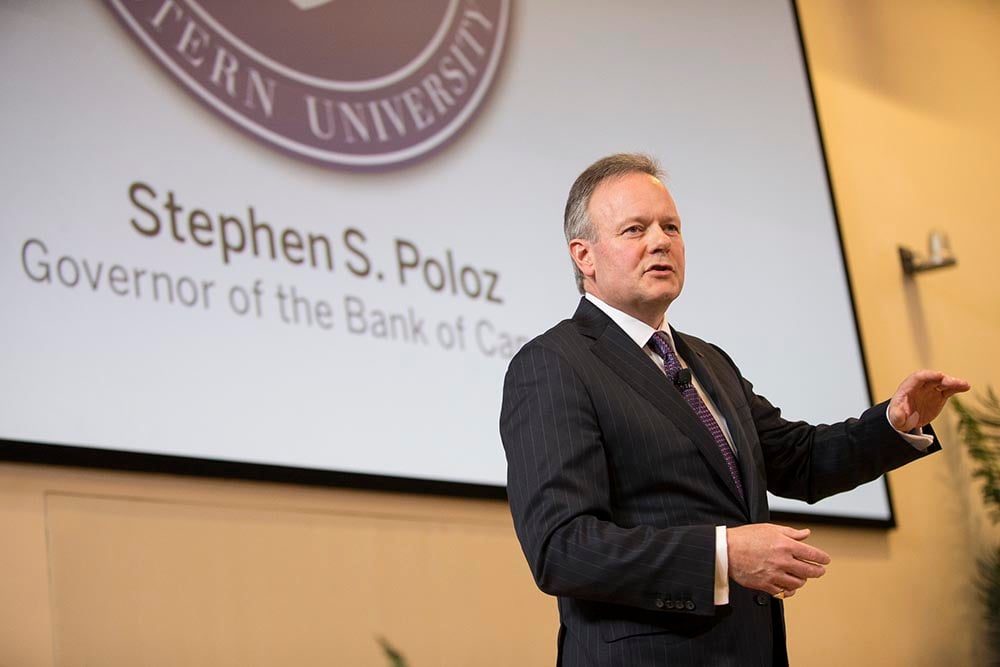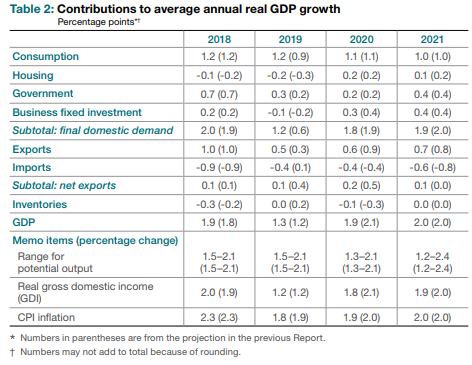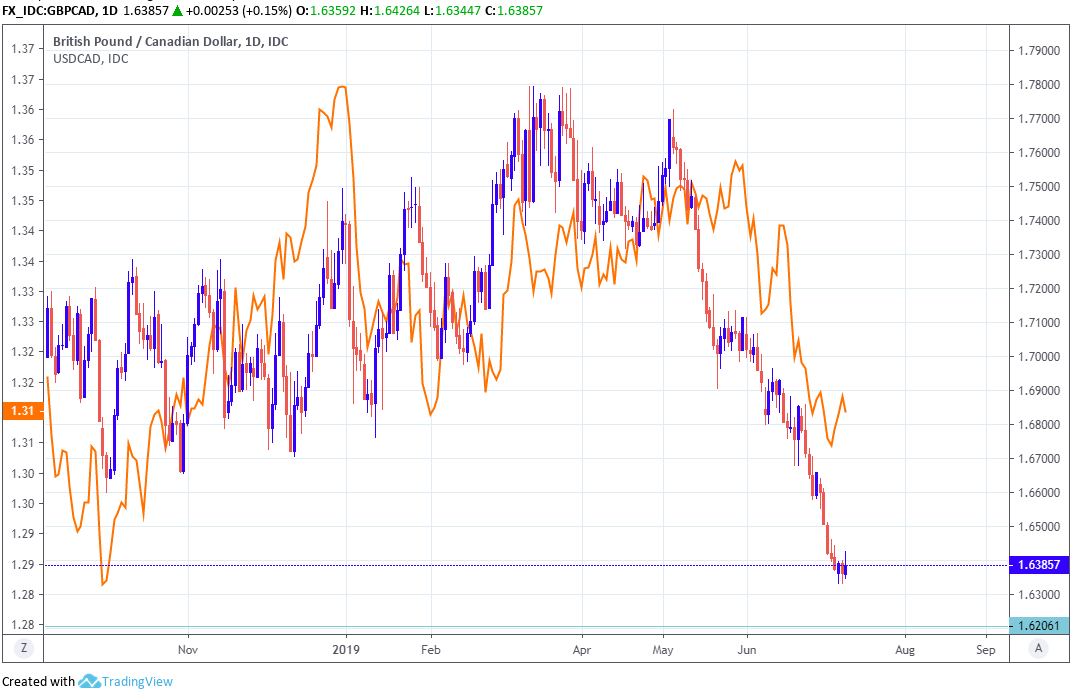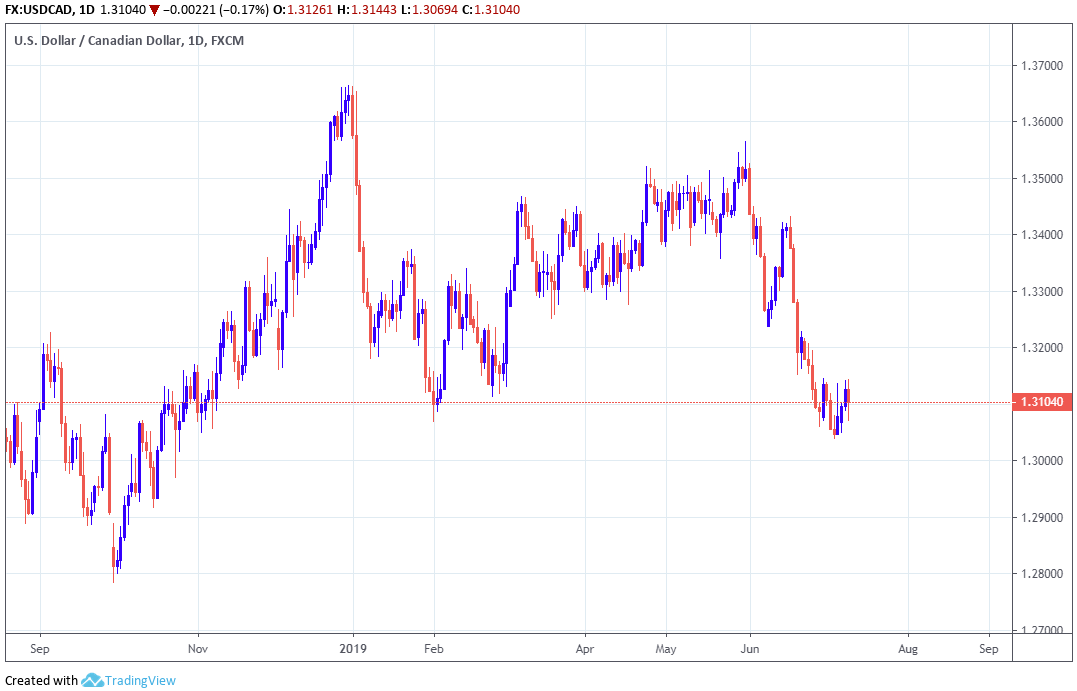Canadian Dollar Left Reeling after Bank of Canada Airs Concerns about Economic Outlook
- Written by: James Skinner

Image © Bank of Canada, Reproduced Under CC Licensing
- CAD retreats from G10 rivals after BoC airs economic concerns.
- Poloz dismisses CA strength as temporary, warns on trade conflict.
- TD Securities eyes more USD/CAD losses as BMO waits on sidelines.
The Canadian Dollar was left reeling Wednesday after the Bank of Canada (BoC) dismissed recent economic strength as a temporary phenomenon and appeared to suggest it believes that Canada is unlikely to escape the slowdown plaguing the rest of the world.
Canada's central bank left its interest rate unchanged at 1.75% Wednesday, in line with expectations, and upgraded its second quarter growth forecast from an annualised 1% to 1.3% to reflect economic figures that have suggested the outcome was higher than previously thought.
The BoC lifted its 2019 forecast from 1.2% to 1.3% but downgraded projections for inflation this year and GDP growth in 2020. Governor Stephen Poloz said the BoC will pay particular attention to "developments in the energy sector and the impact of trade conflicts on the prospects for Canadian growth and inflation" when making future interest rate decisions.

Above: Bank of Canada economic assumptions.
"Despite not moving on rates or signalling any change ahead, the Bank of Canada sent a few hints about its thinking in choosing to put some emphasis on global growth risks, and in dismissing some of the recent good news for Canada's second quarter as coming from "temporary factors," says Avery Shenfeld, chief economist at CIBC Capital Markets.
The wording of the BoC's statement came as a surprise to the market, which had taken robust growth and a healthy jobs market to mean the BoC would at the very least leave the cash rate unchanged at 1.75%, even as central banks in the U.S., Europe and elsewhere cut their own rates in response to a slowdown in their economies.
Central banks the world over have either cut rates in recent months or signalled that they could do so before long, as momentum has ebbed from the global economy and is threatening to undermine inflation pressures that were in some cases already insufficient. The slowdown has come amid a trade conflict between the U.S. and China.
Canada's second quarter economic rebound and a May spike in rate of inflation to 2.4%, which is above the BoC's 2% target, had led markets to conclude the BoC would stand apart from the central bank crowd for a while at least. The Loonie received a significant bid and is now the best performing G10 currency for 2019 as a result.
"The BoC didn’t move explicitly to an easing bias (unlike the Fed and ECB) but sounded more concerned about “persistent trade tensions” that are clouding the outlook. Poloz and Co. still don’t appear to be in any rush to lower rates alongside the Fed (Powell’s comments this morning reinforced expectations for a July cut) but markets seem justified in thinking the BoC’s next move is more likely to be down," says Josh Nye, an economist at RBC Capital Markets.

Above: Pound-to-Canadian-Dollar rate alongside USD/CAD (orange line, left axis) at daily intervals.
"We think it is prudent to expect a tactical - albeit modest - retracement in recent CAD gains given the Bank has upped the global uncertainty angle reflecting the trade backdrop," says Mark McCormick, head of FX strategy at TD Securities. "We think 1.3200/25 will be an important threshold for USDCAD in this regard."
Changes in rates are normally made in relation to the outlook for inflation, which is sensitive to economic growth, but impact currencies because of the influence they have over capital flows and decisions of short-term speculators.
Capital flows tend to move in the direction of the most advantageous or improving returns, with a threat of lower rates normally seeing investors driven out of and deterred away from a currency. Rising rates have the opposite effect.
The most immediate danger for the Loonie is that the global slowdown eventually arrives on Canadian shores, prompting the BoC to change course and follow its developed world counterparts in cutting rates.
"The Bank appears to be monitoring a policy pivot in the US and Europe. While we do not see an imminent policy response from the BOC, they may be laying the groundwork to give themself an out should it need to follow the same policy trajectory," says TD's McCormick.

Above: USD/CAD rate at daily intervals.
Poloz faces a difficult task in the months ahead because, with most other central banks in the developed world either cutting rates or expected to do so, investors and traders have bid the Canadian Dollar higher for months now.
And if the BoC doesn't follow the lead of its G10 counterparts then the Canadian Dollar could strengthen even further. Such gains would make imported goods cheaper for Canadians to buy, which could eventually reduce inflation, and also risk slowing the economy by making export goods more expensive for other countries to buy.
Poloz tipped his hat to this latter concern in a subtle way on Wednesday.
"Exports rebounded in the second quarter and will grow moderately as foreign demand continues to expand. However, ongoing trade conflicts and competitiveness challenges are dampening the outlook for trade and investment," the Governor says, in the bank's statement.
Poloz had already in May appeared to make any future rate rises contingent on a deescalation of the U.S.-China trade war and since then Presidents Donald Trump and Xi Jingping have agreed to eschew further tariffs and to resume talks aimed at addressing the latter's "unfair trading practices".
Meanwhile the WTI oil price, which is a significant driver of the Loonie, has risen 27% in 2019 and an agreement was struck just last week between Organization of Petroleum Exporting Countries (OPEC) to extend production cuts in order to sustain prices at their current higher level.
"We're in no rush to get long at levels north of 1.3100," says Stephen Gallo at BMO Capital Markets. "We are mindful of the fact that USDCAD is a "pressure point" which the FX market could use to force the BoC to eventually turn more dovish (i.e. by causing a run through 1.30 and into the high 1.20s). As such, our medium-term disposition would still be to look for buying opportunities in USDCAD but also to wait and see if lower levels in the pair emerge first."
Time to move your money? Get 3-5% more currency than your bank would offer by using the services of foreign exchange specialists at RationalFX. A specialist broker can deliver you an exchange rate closer to the real market rate, thereby saving you substantial quantities of currency. Find out more here.
* Advertisement




